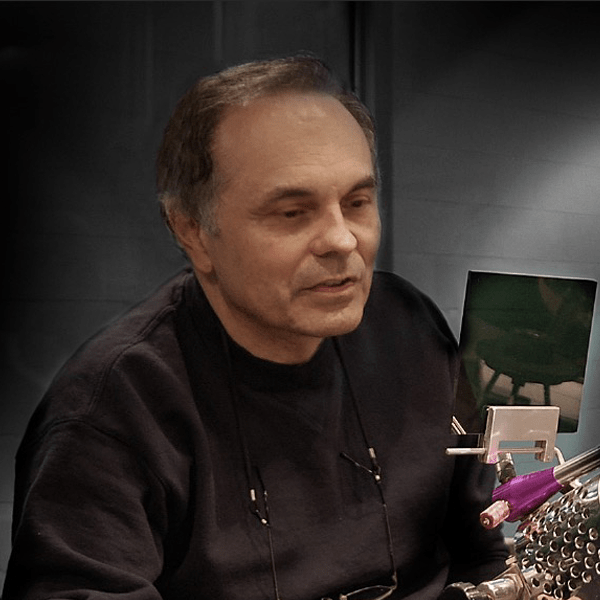
Victor Trabucco discusses the Paperweight Weekend, working with glass for the first time, and his personal innovations.
03:23Victor Trabucco discusses the Paperweight Weekend, working with glass for the first time, and his personal innovations. Oral history interview with Victor Trabucco by Barb Elam, conducted via telephone, September 16, 2019, Bard Graduate Center. Clip length: 03:23.
Time stamp: 00:00
Clip 1: Victor Trabucco talks about the Paperweight Weekend. Clip length: 00:31.
Victor Trabucco: Yeah, it [Wheaton Arts and Cultural Center] was certainly a very comfortable place to go. It’s very homey, and everybody was very friendly, and I thought the facility was wonderful for having a convention. And I always enjoyed the camaraderie there, but there was always a lot of artists that attended, so we always had good conversation, and a lot of great collectors. So I really did enjoy it. I always looked forward to it. I never—I don’t believe in the early days, I missed any of those.
Time stamp: 00:35
Clip 2: Victor Trabucco discusses working with glass for the first time. Clip length: 01:32.
Victor Trabucco: Yeah, that’s how I finally—I actually was working—I was an ironworker, I worked with my father. And I was working during the winter and I got laid off, and that’s when I first got interested in the glass, that would—like I said, those guys who were at the mall during Christmastime. And actually, my wife—this would have been, like, ’74? And there was a piece of one of these little punch bowls that was made out of, you know, that lacework that they do. And my wife wanted one, and it was like eight dollars. And I said, ‘Well, I’m not gonna spend eight dollars on that. I think I could make that.’ [laughs] So I went home and I had a torch, because I was an ironworker, I had a torch at home, and I broke a pop bottle up and I stretched the glass out. And then I met this glass artist at another mall, and his name was Al Verrier, I’m still in contact with him. And he told me where I could get a torch, he told me about didymium glasses, the right glasses to wear, where I could get borosilicate glass. And he made one little piece for me and from there on, I just went—when I went home, I started experimenting, and that’s how I learned. I was all self-taught. Then over the years, like I said, I was always impressed with this: I used to go to the Steuben Glass [Steuben Glass Works, Corning, New York] and watch them work, and I said, ‘Someday, I would love to go through their shop.’ And then years later here, I was actually teaching them my techniques. So that was pretty rewarding.
Time stamp: 02:10
Clip 3: Victor Trabucco talks about being the first paperweight artist to use a glory hole in a lampwork shop. Clip length: 01:13.
Victor Trabucco: So I was the first one to actually use a glory hole in the lampwork shop. And that was something that I guarded for a long time. I’d have showings at—people come to my studio, and I had actually a wall that I would build around my whole glory hole system and everything. So I was the first one to combine the glory hole with the lampworking process. It gives you the advantage to work a lot larger. At some of these—and I even see some of these lampworkers today, they’ve got aluminum shields on, like a pie plate on their face with little holes so they can see through it, and then they’ve got these aluminum suits on, or reflective suits and everything, to keep the heat away—because as you get bigger, so—I’ve made weights that are like six inches in diameter, and that takes so much heat. And if you think about it, you can only get your arm’s length away from that torch. So there’s so much heat in your face, and then your arms and everything, that it’s really very uncomfortable, and it kind of limits your process. So, that’s why I always made such—I was just credited with making such large pieces that hadn’t been done before, and so that was my—kind of my edge.